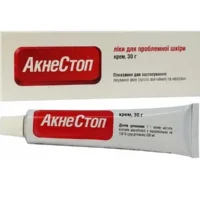Description
Ezolong-40 (Esomeprazole) Coated Tablets 40 mg. №14
Ingredients:
Each tablet contains 40 mg of esomeprazole.
Mechanism of Action:
Ezolong-40 contains esomeprazole, a proton pump inhibitor (PPI) that selectively inhibits the H+/K+-ATPase enzyme system at the secretory surface of the gastric parietal cell. This action leads to a profound and long-lasting inhibition of gastric acid secretion.
Pharmacological Properties:
Esomeprazole, the active ingredient in Ezolong-40, exhibits high specificity and selectivity for the proton pump in the gastric parietal cell. It provides potent and sustained suppression of gastric acid secretion, leading to effective management of acid-related disorders.
Indications for Use:
Ezolong-40 is indicated for the treatment of gastroesophageal reflux disease (GERD), erosive esophagitis, and gastric ulcers associated with Helicobacter pylori infection.
Contraindications:
Do not use Ezolong-40 if you have a known hypersensitivity to esomeprazole or any component of the formulation. Avoid use in patients with a history of severe hepatic impairment.
Side Effects:
- Common side effects may include headache, nausea, abdominal pain, and diarrhea.
- Uncommon side effects may include dizziness, dry mouth, and skin reactions.
- Serious side effects such as severe allergic reactions are rare but require immediate medical attention.
Usage Instructions:
The recommended dosage of Ezolong-40 is one tablet daily, to be swallowed whole with water, preferably before a meal. Adherence to the prescribed dosage is essential for optimal therapeutic outcomes.
Benefits Compared to Analogues:
Ezolong-40, with its active ingredient esomeprazole, offers superior acid-suppressive effects and prolonged acid control compared to other proton pump inhibitors. Its once-daily dosing regimen enhances patient compliance and convenience.
Suitable Patient Groups:
Ezolong-40 is suitable for adult patients with acid-related disorders such as GERD and erosive esophagitis. Special caution should be exercised when prescribing to elderly individuals and those with renal impairment.
Storage Conditions and Shelf Life:
Store Ezolong-40 in a cool, dry place away from direct sunlight. Keep the tablets in their original packaging to protect from moisture. Check the expiry date on the packaging and do not use the product beyond this date.
Packaging Description:
Ezolong-40 is available in blister packs containing 14 coated tablets of 40 mg esomeprazole each. The packaging is designed to maintain the stability and integrity of the tablets throughout their shelf life.
Scientific Evidence:
Esomeprazole has been extensively studied for its efficacy in acid-related disorders. Clinical studies have shown that esomeprazole provides superior healing rates for erosive esophagitis compared to other PPIs. Research published in reputable journals supports the use of esomeprazole as a first-line treatment option for GERD and related conditions.
Additional Information:
Prior to initiating Ezolong-40 therapy, inform your healthcare provider about all medications you are currently taking to prevent potential drug interactions. If you encounter persistent or severe symptoms while using Ezolong-40, seek medical advice promptly.





